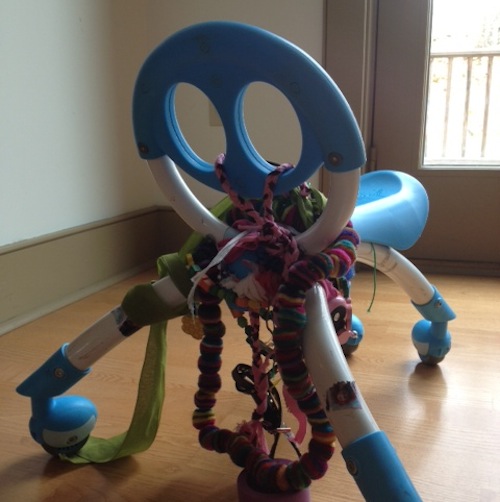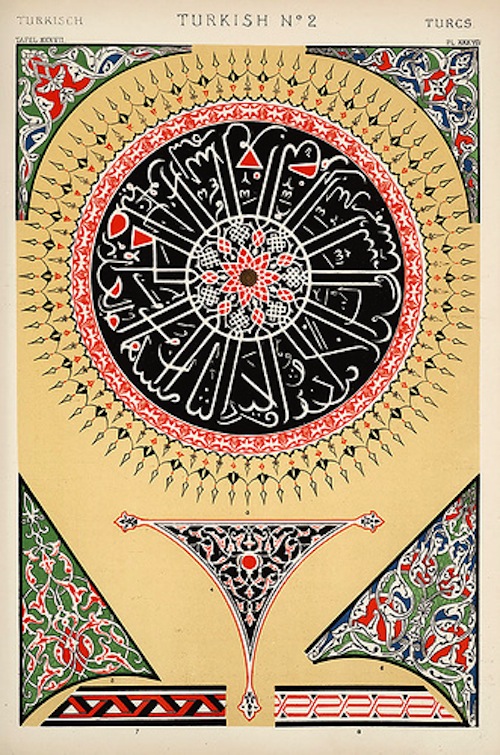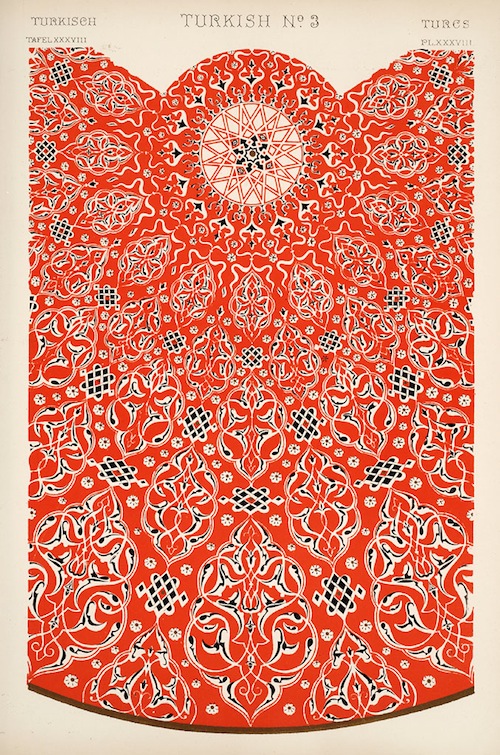At any time, in any corner, in my house, you can find a menagerie my daughter has set up: a congregation of fairies, Playmobil people, stuffed animals, thingies. Her scooter is decorated with ribbons, strings, and jewelry, even my favorite studded belt. She produces clutter in quantities, and every time it encroaches upon the tenuous organization of the household, I just sigh in a pseudo-Zen way and let it go. I’d rather do some reading or even work on a poem.

Yet ornamentation in poetry interests me, as my poetic inclinations tend to gravitate toward what I suspect would be unpopular. There are the traditional objections to the ornamental: it’s superficial, it’s apolitical, it’s too feminine, it’s rococo or worse, Victorian. But, like allegory and other old school figures, ornamentation is far more complicated and attractive.

A good model from the past would be the poetry of Marianne Moore, whose poetry has so much ornamental particularity; that serious joy of exactitude that can be misread as fussy. In “Those Various Scalpels,” a poem she wrote about Mina Loy, Moore simultaneously ornaments and destroys the décor.
Very sharp ornaments, vivisecting froufrou. Martha Ronk has an excellent close reading of that poem: “The figure in the poem is cut into pieces, each piece then ornamented in fetishistic and outlandish ways—made strange, and strangely, for all the visual clues, too fragmented and freighted to be visualized.” Ornamentation does not have to be precious, trivial, or clichéd.

One of my favorite contemporary poets, who happens to be one of my best friends, is Donna Stonecipher, author of The Reservoir, Souvenir de Constantinople, and The Cosmopolitan, which features a series of inlays as a formal device. I asked her what she thought:
I’ve always been attracted to ornament, perhaps partly because I’m not “supposed” to be. And in fact, poetry and ornament may be more connected than we think. The architect and historian Kent Bloomer has done some very interesting work on the relationship between them in terms of ornament’s rhythmic and metamorphic properties. But living in former East Berlin as I do, I got especially interested in how ornament or lack of ornament has historically been used as a weapon by various ideological systems. A knee-jerk disdain of ornament is also ideological.
In Donna’s latest manuscript, Transaction Histories, each series of prose poems has an element that organizes it in a semi-ornamental way. What can be found in the poems? Persian carpets, polar bears, vitrines of bad design, seventeenth-century landscape paintings, container ships transporting garbage, gaps, actual boxes on the page, etymologies, false etymologies. As in this example:
She wished she could get all the way to her destination by speeding down the runway, that the plane would keep violently hurtling her forward forever and never, ever lift off. Of what use is peace? Say no to a life in the clo uds, drinking cloud-milk and having cloud-sex, going to cloud-lectures and reading cloud-explications de texte. The past was a Persian carpet arabesquing into the future, losing him in the ornamental present.
So, ornamentation is already in revival, and as Donna concludes, “ornament is never ‘only’ ornament.”
Born in Seattle and raised in Pittsburgh, poet Camille Guthrie earned a BA at Vassar College and an ...
Read Full Biography

